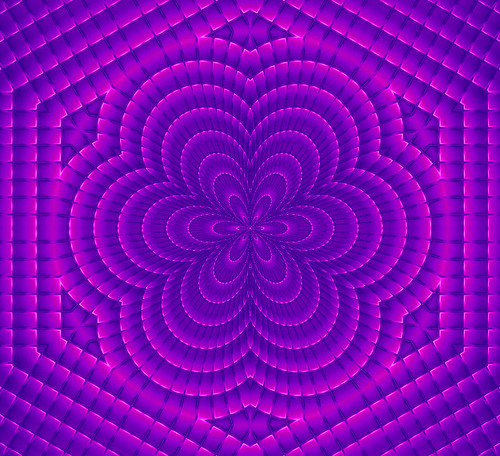
An optical illusion (also called a visual illusion) is characterized by visually perceived images that differ from objective reality. The information gathered by the eye is processed in the brain to give a percept that does not tally with a physical measurement of the stimulus source. There are three main types: literal optical illusions that create images that are different from the objects that make them, physiological ones that are the effects on the eyes and brain of excessive stimulation of a specific type (brightness, tilt, color, movement), and cognitive illusions where the eye and brain make unconscious inferences.
Rotation and expansion
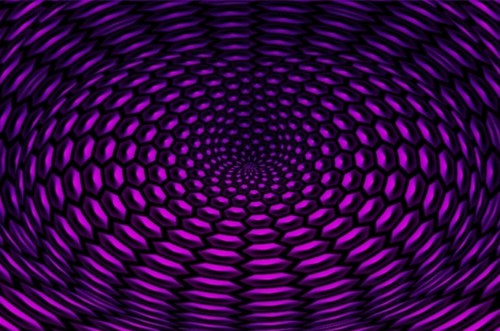
I've been using Paint Shop Pro 9 for a while now, to create all sorts of digital images that result in multiple interference patterns that fool ones eye into seeing movement where there is none. These types of images have captured my attention since I was a child. I remember my aunts and uncles having fuzzy flack light posters with all sorts strange and wondrous images, many of them designed to give the impression of some sort of movement. When I was a little older, I discovered that I could make similar images with string art, tying string in straight lines on a board to give the impression that there were curves in the design, in spite of all of it being made with straight lines.
Here is an example of string art. The following image is part of the public domain, and is not my own work.
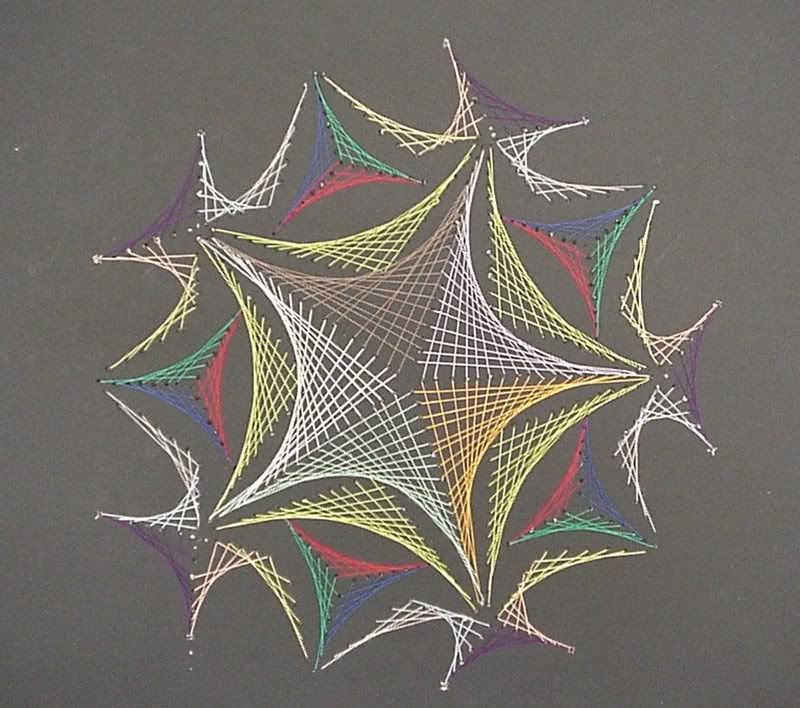
"Physiological illusions, such as the afterimages following bright lights or adapting stimuli of excessively longer alternating patterns (contingent perceptual aftereffect), are presumed to be the effects on the eyes or brain of excessive stimulation of a specific type - brightness, tilt, color, movement, etc. The theory is that stimuli have individual dedicated neural paths in the early stages of visual processing, and that repetitive stimulation of only one or a few channels causes a physiological imbalance that alters perception.
The Hermann grid illusion and Mach bands are two illusions that are best explained using a biological approach. Lateral inhibition, where in the receptive field of the retina light and dark receptors compete with one another to become active, has been used to explain why we see bands of increased brightness at the edge of a color difference when viewing Mach bands. Once a receptor is active it inhibits adjacent receptors. This inhibition creates contrast, highlighting edges. In the Hermann grid illusion the gray spots appear at the intersection because of the inhibitory response which occurs as a result of the increased dark surround." - From this wikipedia article.That paragraph is referencing the following image:
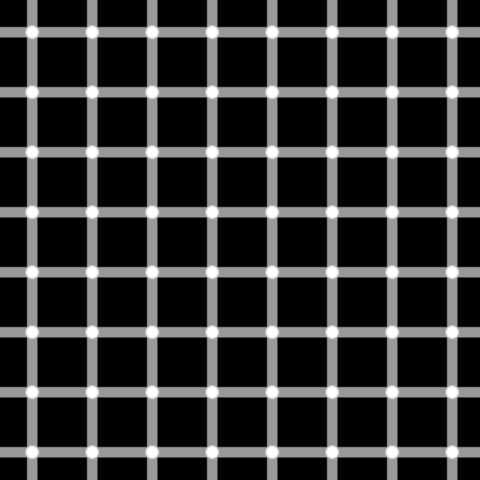
The types of images I really enjoy attempting to make employ techniques that cause the viewer to experience both expansion and depth. Other types of movement that can be perceived with these types of illusions is rotation, collapse and flicker.
Light movement:
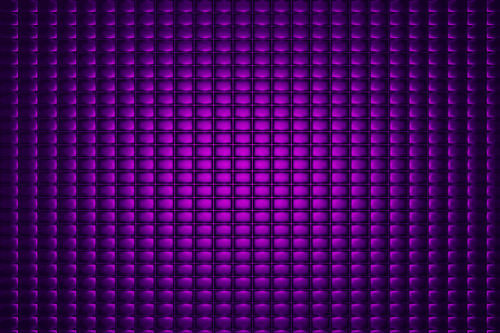
"perception is an active construction of the mind rather than a valid representation of objective reality." - Psychological Assessment Referral & Treatment Services
"Researcher Mark Changizi of Rensselaer Polytechnic Institute in New York says optical illusions are due to a neural lag which most humans experience while awake. When light hits the retina, about one-tenth of a second goes by before the brain translates the signal into a visual perception of the world. Scientists have known of the lag, yet they have debated over how humans compensate, with some proposing that our motor system somehow modifies our movements to offset the delay.
Changizi asserts that the human visual system has evolved to compensate for neural delays, generating images of what will occur one-tenth of a second into the future. This foresight enables human to react to events in present. This allows humans to perform reflexive acts like catching a fly ball and to maneuver smoothly through a crowd. [3] Illusions occur when our brains attempt to perceive the future, and those perceptions don't match reality. " - WikipediaBlinking Bruise
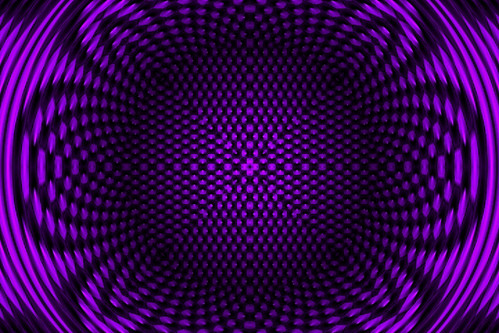
The organizational mechanisms of vision are best demonstrated by illusions. Illusions illustrate that perception is a creative construction that the brain makes in interpreting visual data ....Learning does not prevent us from being taken in by these illusions.









No comments:
Post a Comment